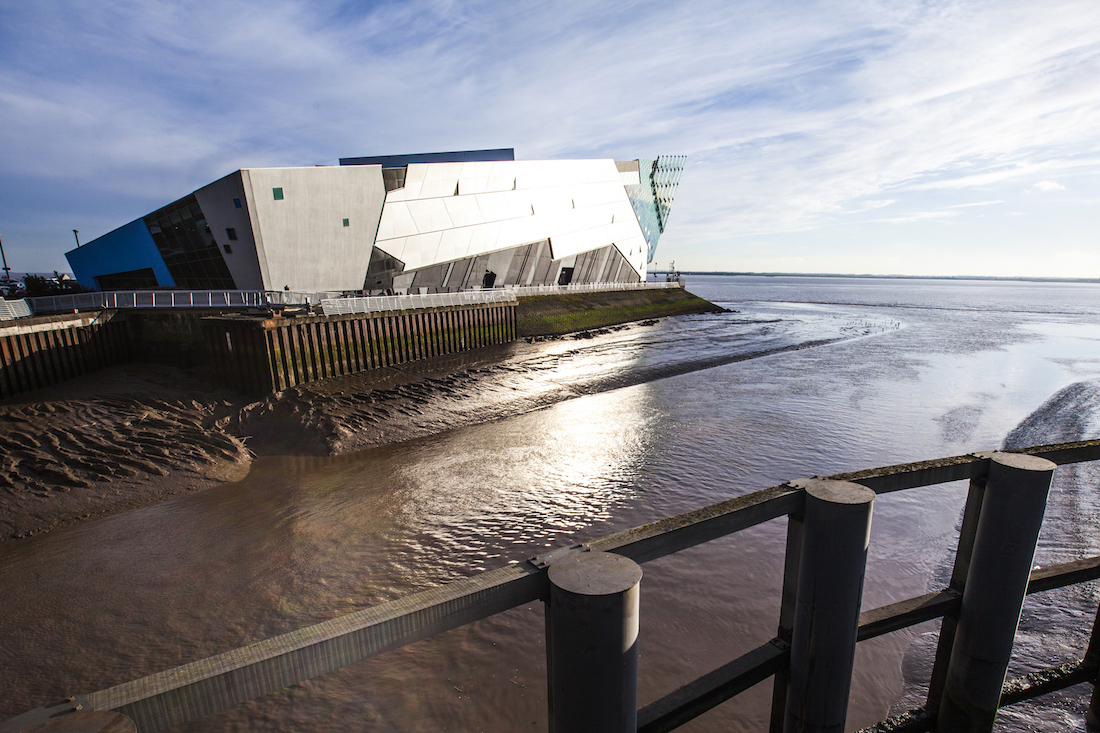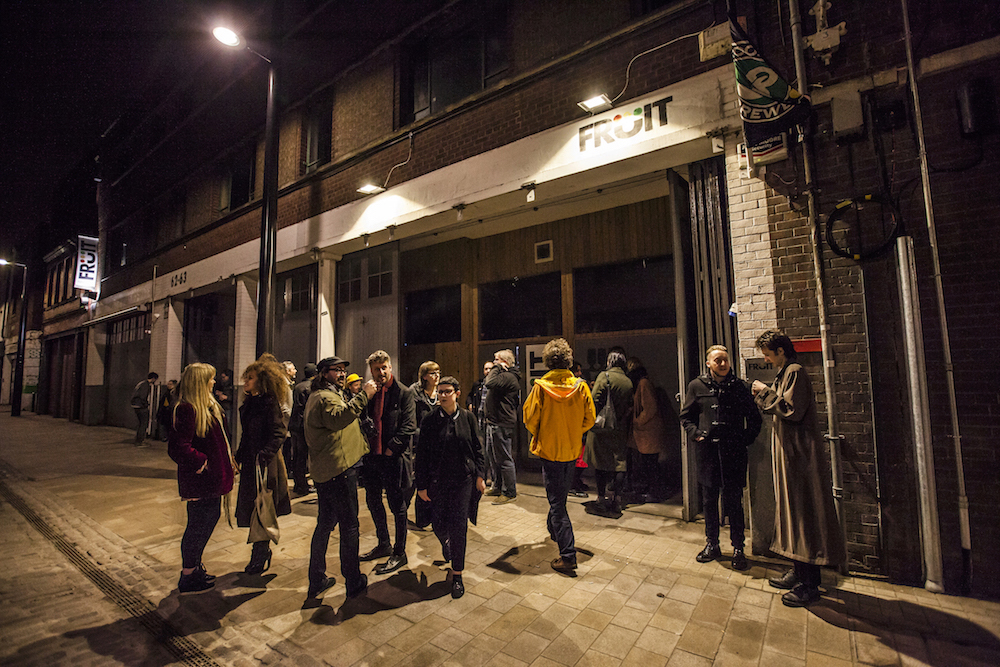(Photos: Jake Lewis)
In January of last year I visited the city of Hull. It had just been announced as the 2017 UK City of Culture. I wanted to take a short holiday there to discover what it was about Hull that made it worthy of such a prestigious label, so I travelled up there and asked around town for things to do.
Videos by VICE
Sadly, I was left disappointed by what Hull had to offer. The restaurants closed early, the bars closed early, everything was glum and sad, there was nothing to do – it felt like a city on curfew. But that was then, before it had been allowed to show its true colours.
It’s now 2017, and the City of Culture is open to earn its title. So last week I returned to the northern port town to see what had changed.

This year, the city will be going all out to showcase what it has to offer; there are hundreds of events planned for every one of the 365 days that it’s the UK’s official centre of culture.
I met up with Sam Hunt – the music programmer and one of the executive producers of the event series – in the Humber Street Gallery. Humber Street is the centre of Hull’s trendy regeneration. Inexplicably, there are about four tapas restaurants in the space of 15 square metres, and they were all doing modest business on a Friday lunchtime. There were little pop-ups and galleries and museums on the freshly constructed road, though not a huge amount of people populating them.
“We’ve not invented 200,000 new audience members, or that sort of thing,” says Sam. “It’s more about taking what was already happening in a city of 300,000 people. There was something happening every night anyway, so we’re adding things like this to it, and little things like what’s happening tonight with Genesis [P-Orridge]. It’s always been the city of culture; it’s just about shining the spotlight on certain aspects.”

The evening saw a show at the adjacent Früit venue (complete with superfluous umlaut) by Cosey Fanni Tutti and Genesis P-Orridge of COUM Transmissions, the early-70s art collective founded in Hull which later morphed into industrial music pioneers Throbbing Gristle.
Above the gallery was a three-story homage to COUM and their depraved, sexualised Wicker Man-esque performance art, mixing a dark English fete theme with Viz-like doodles of cocks (COUM’s logo, a semi-erect phallus with a rivulet of discharge dribbling from it) and other playful things.

The exhibition features the life’s work of these proud sons and daughters of Hull, and was full of volunteers in bright purple Hull 2017 jackets, most of them older women, beaming with pride as they stood next to a glass case full of leather pants and videos of men sodomising themselves with unlit candles.


The show saw Genesis P-Orridge, with a Thee Temple of Psychick Youth logo and visuals bursting and twisting behind them, deliver an hour long spoken word monologue about love and memory. It was a little bloated. Cosey Fanni Tutti, however, terrified the room by playing evil, sad industrial music, the crunches and sirens of which were illustrated by haunting, warped images of Hull from the 1970s and 80s, faces in pubs and clubs stretching and moving and blending into each other, as if a pile of family photos was being torched by a disgruntled divorcee.

“There’s something internationally significant about the art of these guys,” says Sam, “but that’s never been explored or celebrated in the city that it came from. That kind of approach to art was absolutely specific – the city had a guiding hand in that creation. It could only really have happened in a city like Hull.”
Something else that apparently could only have happened in a city like Hull is the creation of a Snakebite with a shot of Jäger in it, the brown liquid staining the foam like a skid mark on some already old and soiled underwear. It only took a couple of these and a few other drinks to make me feel as if I’d snorted an unfeasibly large line of ketamine, a feeling I’ve never had while drinking alcohol.
“If there’s a wedding on, we’ll sell about 50, 60 of those,” said a hotel barman, who then gave me four pints for free because I wasn’t staying at that hotel, and thus had no room number to put the pints on. A pizza was ordered to the dark corner I was sat in, and consumed, before the SnakeJäger caused one of my friends to throw it right back up. My first day of culture had come to an end.

“It’s not ‘Hull Tries to Do Art’,” said Sam the following morning, “it’s a globally significant exhibition. This is going to go touring around the world. It’s serious art. The Blade is serious art.”
The Blade is an installation in the town centre. It’s the blade of a wind turbine, and is absolutely fucking enormous, stretching from one end of the concourse to the other, even forking into the road, as if darting towards the museum on the other side. It looks different from every angle, and walking towards and around it is like an optical illusion. It’s also significant because Siemens, one of the sponsors of the City of Culture events, has opened a wind turbine factory, supplying 1,000 jobs to the people of Hull.

Joe, left, and Nathan of Squarewaves
Joe Cox, 27, and Nathan Giles, 22, are part of an electronic music collective called Squarewaves, who were playing a show that evening. I asked them as young artists how they felt about Hull’s designation as City of Culture.
“Amazing,” said Joe. “So good. It was just crazy – absolutely crazy. Hull needed it and really wanted it. Stuff is happening, and it always has been. It has a historic past and a lot of culture throughout its history. There’s a lot that happened, but it’s been kind of forgotten. It just stayed quiet, but things kept bubbling inside, and so it kind of deserved to be like, ‘You know what? Give us a break.’ It’s time to actually point out the things that you’ve all forgotten about, and all these amazing things that happened”

As Sam pointed out, Hull is not completely transformed, and there aren’t a million people about to descend on it, move in, open bars or what have you. But the effects of the regeneration are plain to see. The place has a totally different feel to it compared to the last time I was here; there’s optimism in the streets.
I suppose the city had finally had enough of derision from people like me and was prepared to disrobe and show what had always lain beneath. There’s a quiet thrill to seeing a British town on the up while everything around it seems to be falling cataclysmically by the wayside, and depending on what happens to the economy in the months and years following Brexit, visiting Hull this year might be the last chance you have to watch that process for quite some time.
More
From VICE
-

Screenshot: Hopoo Games -

Wolf Mattress -

Screenshot: Shaun Cichacki -

Nick Fuentes, a white supremacist streamer and US social media pundit, appears to mace 57-year-old Marla Rose, a 57-year-old on his doorstep on Sunday, November 10 (Imagery courtesy of Marla Rose)
